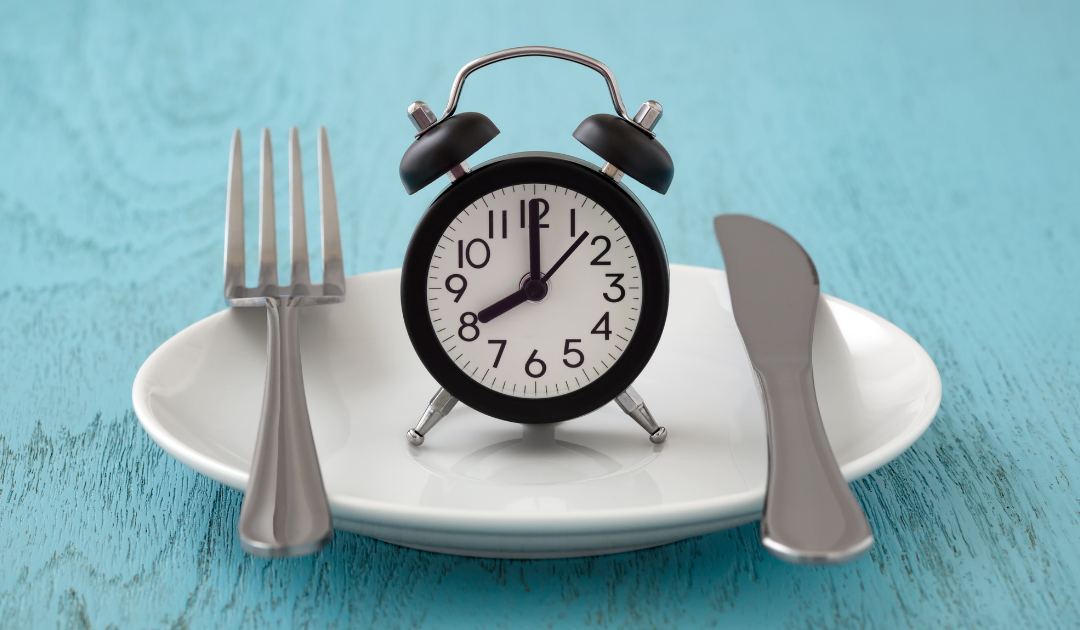If you read a weight loss, fitness, or health blog, you have most likely heard Intermittent fasting mentioned. Intermittent fasting is a way of eating that promotes weight loss, fat burning, muscle building, and many other health benefits (so many!) through a very simple eating pattern (keyword: SIMPLE). Here is more information about intermittent fasting so that you can decide if it is a good option for you.
IF is a Pattern of Eating
Many people call intermittent fasting a diet, but it is rather a pattern of eating for optimal success. It teaches you a lot, including how to listen to your body’s hunger signals, and to follow a healthy pattern of eating. You are following a specific pattern each day, where you only eat during a shorter block of time, fasting for the rest of the day, except for having coffee, tea, and water. This pattern helps your body burn food more quickly so that there is more time for burning fat.
There are Different Protocols
The next thing you will learn about intermittent fasting is that there isn’t just one way to do it, but several methods or protocols to choose from. It is very flexible, so you can look at the different methods and choose which one works best for your schedule and your lifestyle. Here are some popular IF protocols people like to turn to:
16:8/Lean Gains – This is a popular option, allowing you to eat for 8 hours, then fast for 16 hours. You try to do it as often as possible. It can be done every day of the week. I like this best, as I don’t feel deprived because I still eat every day. Research shows you can also do a 14:10 up to an 18:6 on a daily basis.
5:2 – The 5:2 diet requires you to eat how you normally would 5 days out of the week, then have 2 alternating days of the week where you fast for 24 hours. You can often have a low amount of calories on fasted days, up to 500-600 calories.
Warrior Diet – With the warrior diet, you go 24 hours between eating, having just one large meal at the end of every fasted day.
Eat-Stop-Eat/24-Hour – This is similar to 5:2, except you may only go 24 hours once a week. You also don’t have the calories, but a full fasting day with only water, coffee, or tea.
Tips for Starting Intermittent Fasting
Here are a few quick tips that can make this transition easier for you:
Pick your protocol first, then do plenty of planning. You want to make sure you know when you will eat, what to eat, and how much.
Don’t go extreme on the first day. It is best to start with the lesser protocols, like a 12/12, 14/10, or 16/8 where you still have a pretty lengthy window of eating. Wait a bit before you go to the 24-hour fasting protocols.
Hydration is an absolute MUST. Drinking water during your fasting window is imperative, as well as between meals in your eating window.
Listen to your body. The intermittent fasting method you are using might not work well for you, so if you notice bad side effects, you may need to make adjustments or start slower
*** You should not intermittent fast if you’re:
- Hypoglycemic – need to resolve this first
- Pregnant, nursing, are wanting to conceive
- Brittle diabetic (blood sugar out of control even with medication)
- On medications (check with your doctor first)
- Have low blood pressure
- Are underweight
- Have amenorrhea – missing periods
- Have an eating disorder
[RECIPE] STEWED BUTTERNUT SQUASH WITH SALAD

Serves 4
- 1½ pounds butternut squash, chopped
- 1 small onion, chopped
- 1 garlic clove, chopped
- 1-inch piece of ginger, grated
- 1 tablespoon garam masala
- 1 teaspoon turmeric
- 2 cups vegetable broth
- ½ bunch cilantro, finely chopped
- 8 cups mixed greens
- 1 large cucumber, chopped
- 1 cup shredded carrot
- dressing of your choice
SIMMER STEW. Add butternut squash, onion, garlic, ginger, garam masala, turmeric, and broth to a large pot over medium heat. Cover and bring to a boil. Turn the heat down to a simmer and continue to cook for about 20 minutes – or until the squash is tender. Turn off the heat and top with chopped cilantro. Set aside to cool.
ASSEMBLE SALAD. Add the mixed greens, cucumber, carrot, and dressing to a large salad bowl. Mix well. Serve the butternut squash stew with the salad.
To Your Health,
Patti






